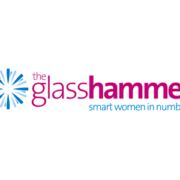2015 Year in Review: Professional Women, The Gender Discussion And Why Leaders Need To Be Involved
By Nicki Gilmour
 It is December already so time for the annual Year in Review 2015 piece that looks at the progress, of the professional woman at work in the macro and micro sense. On a general level and where we can measure stats for boardrooms and management numbers, I have to report very little progress. However, on a company-specific level, some firms get it and are doing a great job at a comprehensive plan to tackle the issue of having a representation of women at all levels. Citi have just announced the addition of two more women to their Board for 2016- congrats to Ellen Costello and Renee James on those appointments.
It is December already so time for the annual Year in Review 2015 piece that looks at the progress, of the professional woman at work in the macro and micro sense. On a general level and where we can measure stats for boardrooms and management numbers, I have to report very little progress. However, on a company-specific level, some firms get it and are doing a great job at a comprehensive plan to tackle the issue of having a representation of women at all levels. Citi have just announced the addition of two more women to their Board for 2016- congrats to Ellen Costello and Renee James on those appointments.
I have outlined three crucial points in this article for any firm to take notice of when embarking on this journey. The other continuous notable effort that I think is worth mentioning is the increase in male gender champions and my favorite open letter of the year comes from John Ryan as he writes to Michael Moritz showing us that men also care about the endless stereotypes that make a mockery out of talented people of both sexes.
What do leaders who “get it” look like?
People, and specifically leaders of companies who get how to really create culture change around this very unresolved gender dilemma, all share a common ability. Smart leaders understand that they personally have to get involved as well as re-engineer processes to support behaviors beyond the evangelizing part. Leaders comprehend the strategic nature of what needs to happen, that companies are eco-systems and so every action has a reaction downstream and are prepared to address multiple areas at once. Since the culture of any team, company or even country is simply a culmination of ‘how we do things around here’, what and who gets tolerated, as well as what and who gets rewarded for their work means that any firm who can hold behavioral boundaries can improve their culture for all working there. It can be a win win and not a zero sum game.
Pierre Nanterme, CEO and Chairman of Accenture is the latest leader who is putting his money where his mouth is. He has aggressive hiring targets, revealing his goal as 40% of new hires being female by 2017 as well as initiatives to ensure pay parity at entry level and throughout a woman’s career to ensure women don’t get left behind. This disparity has been documented by Catalyst and others over the years to be almost $500,000 in the span of their career earnings.
Nanterme states, “We believe strongly that gender equality is essential for a high-performing, talent-led organization. This commitment extends to pay, and we strive to ensure that all our people – women and men – are compensated fairly and equitably from the moment we hire them through the milestones of their careers here.”
Why do I believe Nanterme? Or least believe he has a shot at it? Well, other than the fact that he actually believes there are equally talented women as men to hire, unlike Mike Moritz of Sequoia Capital who just last week stated that there are no qualified women for him to hire (in Silicon Valley venture funding), Nanterme has addressed his blind spots whereas Mike has just showed his cognitive bias when he unwittingly revealed his closely held paradigm that hiring women would probably be a reflection of him lowering his standards.
That is the differentiator for me and as an organizational psychologist who is nine years into this topic with several live projects under my belt and the publisher of 4000 articles on theglasshammer.com, I find that the barriers to progress are definitely systemic but correctable, such as accurate succession planning processes and equal pay for the same job done. More interestingly, is that the maintainers of these barriers are actual people and it is entirely feasible to address issues just like any other area of operational efficiency and resource optimization but their refusal to acknowledge there is a problem beyond some sort of Noah’s Ark approach of ticking off lists is where the work gets weird.
We all have bias in the sense of preference but it is how preference is built in us that needs closer examination-let’s face it, when you have all the cards and have bias towards hiring one type of person and the rest of the system is aligned to support the stereotype, the stakes to change aren’t so high to address your own paradigms in life. Hence the word ‘diversity’ is a misnomer because what we are talking about in actuality is about who we choose and authorise to lead us, manage projects and generally get heard. It is all a meritocracy project and meritocracy exists in very few places if at all.
What three things can companies do better in 2016 to ensure progress?
Action #1 Leaders can lead on equality.
Status quo doesn’t change organically ever. There are levers and deliberate actions to take. How managers act will enhance or minimize the effects and impact of any program or policy that even the best HR team or women’s network could produce. So ensure they act well. Why leave that to chance?
By being a sponsor to ensure the right people get promoted or get allocated onto a project, men and the senior women that can “lift as they climb”, this can change the world one person at a time
Action #2 Stop expecting the women in your firm to fix the gender issue
Attracting, hiring or promoting women shouldn’t be a “woman’s” thing. Too many times, I see women’s networks trying to address these issues whilst everyone else gets on with their day jobs. Exclusively outsourcing this work to ERGs, networks and committees is really erroneous. Why would you put the onus on the group that is asking for their fair share of promotions and access to sit at the power table to be the people to fix the inequities in the system?
Not all companies leave all the work to the women and the women’s networks to deal with the issue. Simply put, it is everyone’s problem to fix inequities but some people can fix it faster than others due to their official influence on talent processes and workplace culture.
Action #3 Women and Men all need to address their biases
One of the most surprising elements that I have personally discovered over the years is that some women revere men as stereotypical leaders more than men do, or on a equal par, even if they themselves are arguably the smartest person in the room. Fascinating to say the least and it happens in small and big ways, from deferring to the male counterpart in meetings to unconsciously believing that men make better leaders. I have talked about this at length in other articles in other years.
My advice? Admit you are part of the problem (if you are) because everything you need to know about how ridiculous we all are, based on the binary of gender identity and how being a woman is still somehow a trait that effects a woman’s ability to lead, manage, do deals and generally do well at work can be seen most compellingly here.
While we are on the subject, can we dispel the myth that brain science has anything to do with performance at work (and men are from next door not Mars as it turns out).Social conditioning has a lot to answer for and you can do something about that as the impact is real with the latest research from Accenture showing that Gen Y women despite everything we have told them are still less likely to ask for a pay rise than their male counterparts and 47% of this particular survey respondents cannot see a path to the top.
Finally, can you get everyone on board? Of course not! But those who don’t will be in the minority both in numbers and effectual influence and power, so let’s get started! Smokers still want to smoke on airplanes, right? The difference is culturally a shift took place only because a law and a process facilitated that shift. Think about it.
We wish you a peaceful, prosperous and Happy New Year to all theglasshammer.com readers and supporters.
By Nicki Gilmour










